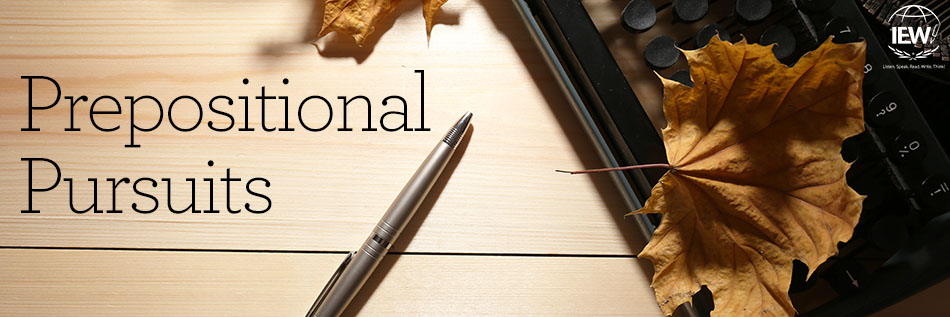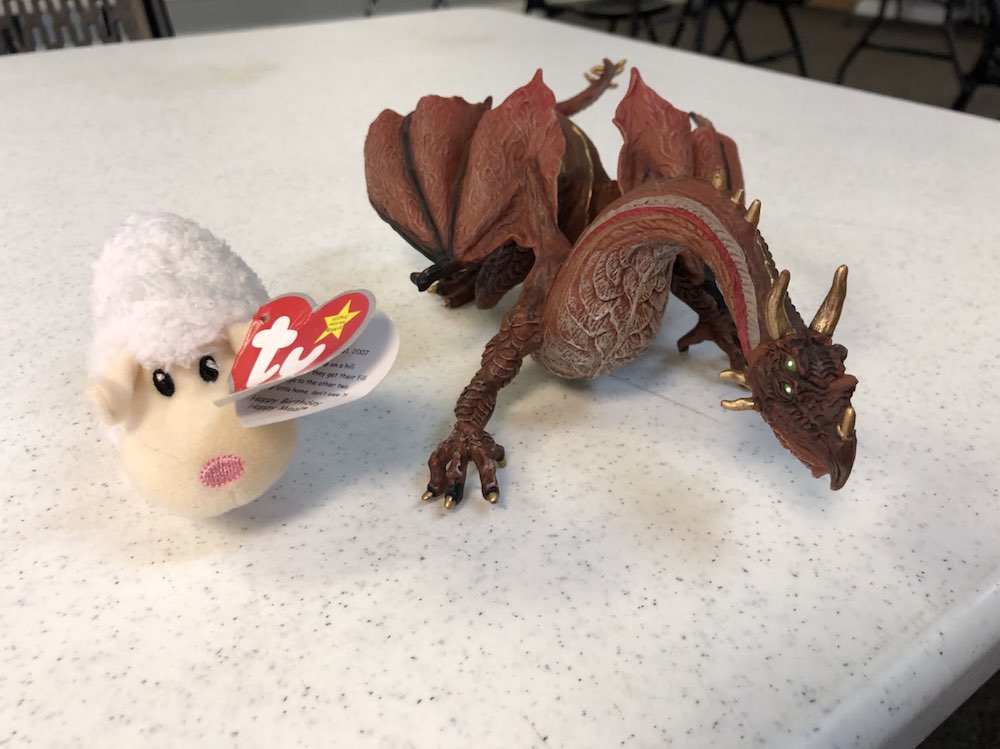
My little class and I have been cruising right along this year. Working through Medieval History-Based Writing Lessons, they’ve learned how to insert all of the dress-ups. The kids are doing great! I have really enjoyed reading their assignments and watching their writing skills develop. In today’s class I knew I would be introducing our first sentence opener: the prepositional opener. But before the students could create this type of sentence construction, I knew they would need to understand what prepositions are and how they function within a sentence. I wanted to teach this grammatical concept in as concrete a way as possible, so I considered my options. Last night I formulated my plan.
When I strolled into class earlier this morning, in addition to my regular items (textbooks, whiteboard markers, paper, and pens) I carried a small paper bag. Setting it on the edge of my desk without explanation, I started to teach the lesson. In this case it was Lesson 12 on the Battle of Hastings. When it came time to introduce the prepositional opener, I called for two volunteers from the class. They came up to the front, and I reached into the bag and pulled out my manipulatives: a plastic dragon and a small fluffy sheep.
Volunteer One controlled the dragon. Volunteer Two handled the sheep. The paper bag served as a cave. Over the next five minutes or so, the class and I called out directions. The dragon flew over the sheep. The sheep ran into the cave. The dragon alighted near the cave. The sheep jumped across the chasm (from one desk to the next) to get away from the dragon. The sheep tumbled off the cliff (desk) and onto the rocks (the floor). In some scenarios the sheep was miraculously able to get away safely. In others, I’m sorry to say, the dragon was able to snap up a tasty lunch. Much merriment was had by all.

After we had spent some time playing with, ahem, working with our props, I walked back to the whiteboard where I had the students shout out some sentences. We created a sentence for each outcome so that no one felt disappointed. Perhaps my favorite of the bunch was shared by one creative student who wanted each of the creatures to have a happy conclusion. He dictated, “Inside the belly of the dragon, the sheep made many friends.” Silly? Absolutely! But effective? You bet.
Any time a teacher is able to introduce laughter and multisensory experiences into lessons, it makes it more likely the students will learn and retain the information. They noticed how the spatial relationship between the two objects changed. By including the dragon and the sheep, my students were able to see that the preposition described the relationship of a noun or pronoun (e.g., the sheep) to another word in the sentence (e.g., the cave). And they laughed at the sometimes comical situations that were created. In writing their sentences on the board, they were able to perceive the definition: Prepositional phrases begin with a preposition and contain a noun or a pronoun, but there is no verb within the phrase itself.
prep + noun (no verb)
As you work with your own students, I encourage you to seek out ways where you can make the learning as concrete and fun as possible. Including multisensory learning (touch, taste, sound, scent, and sight) along with some laughter will not only keep your students smiling and engaged, it will keep their brains active and learning as well. I look forward to each and every class I get to teach. And while they may not admit it, I think my students look forward to class as well. Now, to figure out what I’m going to do for next week’s class.
|
Jennifer Mauser has always loved reading and writing and received a B.A. in English from the University of Kansas in 1991. Once she and her husband had children, they decided to homeschool, and she put all her training to use in the home. In addition to homeschooling her children, Jennifer teaches IEW classes out of her home, coaches budding writers via email, and tutors students who struggle with dyslexia. |

